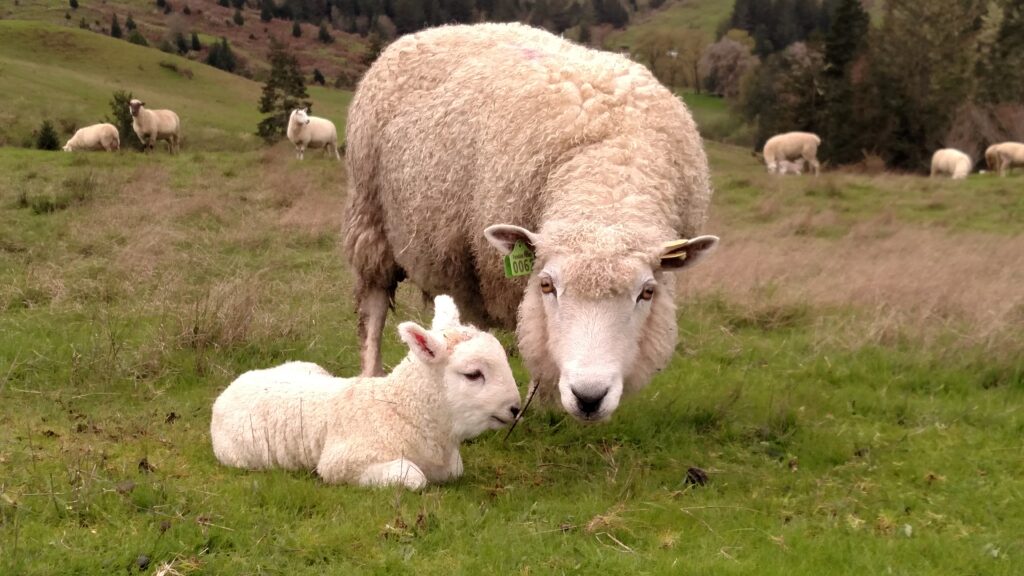Perendale sheep originated in New Zealand as a cross between a Border Cheviot ram over a Romney ewe. Romney sheep (originating in the fertile Romney Marsh area of southeastern England) were initially the predominant breed of sheep in the hill country of New Zealand, where they were introduced in 1853. By the 1930s, the fertility of soils across much of New Zealand’s hill country had declined precipitously, in large part owing to overgrazing. Vegetation in many areas had reverted to weeds and scrub. Farmers began to experiment with crossing Romneys with hardier “hill breeds” of sheep. Such “hill sheep” (one example of which is the Border Cheviot) had evolved over hundreds of years to thrive in regions with poorer soils, including those along the border between Scotland and England.
In 1956, Sir Geoffrey Peren at Massey University systematically explored the crossing of Border Cheviot rams over Romney ewes, developing the Perendale breed. This breed gained rapidly in popularity in New Zealand, and the Perendale Sheep Society of New Zealand was established in 1959. They enjoy considerable popularity in New Zealand, and have established a reputation for being “a sheep for all environments”, as well suited to the fertile plains of New Zealand as to the hill country. Perendale flocks have also been established in Australia, where they have been found to be well-suited to areas with rainfall that is too high for Merino sheep, as well as soils too poor for improved Romney sheep. At this point, many years of selective breeding have been used to develop the Perendale breed of sheep; a random mating of a Cheviot ram to a Romney ewe would not necessarily produce sheep of the same high quality.
